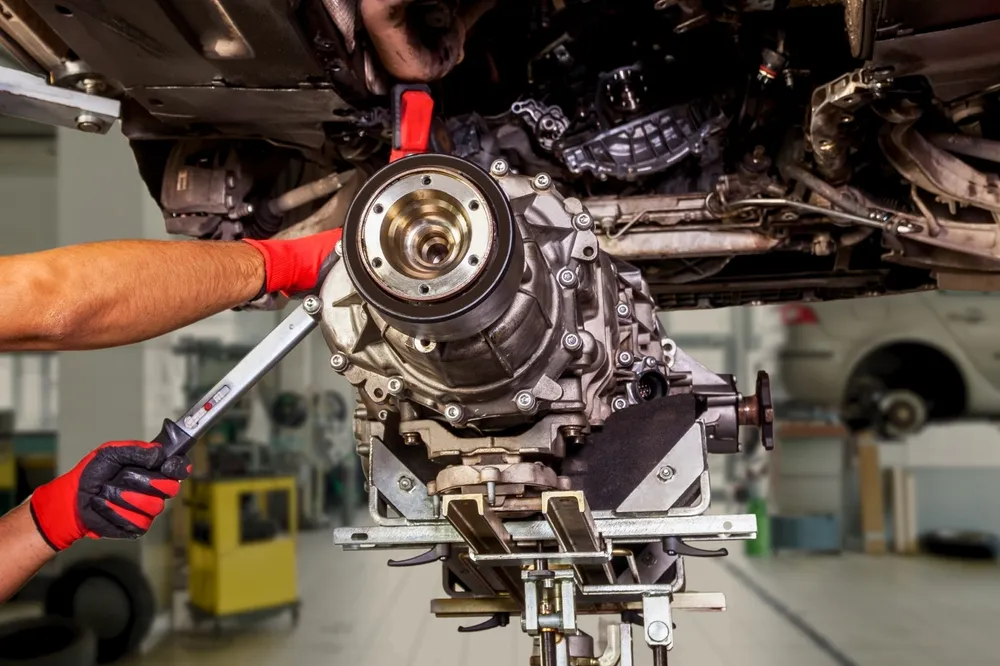Lifting a gearbox, an integral component of any vehicle's drivetrain requires mechanical understanding and a meticulous approach to ensure safety and efficiency. This comprehensive guide delves into the nuances of selecting the right tools, implementing best practices, and adhering to safety protocols to lift a gearbox effectively.
Introduction
The gearbox, a critical part of the power transmission system, often must be removed for maintenance, repair, or replacement. Given its substantial weight and complexity, lifting a gearbox is not trivial. It demands precision, appropriate tools, and a thorough understanding of safety practices to prevent damage to the gearbox and avoid personal injury.
Understanding Gearbox Lifting
Lifting a gearbox involves more than just brute force; it requires careful planning and execution. The process can vary significantly depending on the vehicle type, gearbox size, and available workspace. Understanding the gearbox's weight distribution and attachment points is crucial for a smooth lift, necessitating a detailed approach to selecting lifting aids and executing the lift.
Essential Lifting Aids for Gearboxes
Engine Hoist or Crane
The engine hoist stands as a cornerstone tool for lifting heavy components like gearboxes. Available in various capacities, the choice between a hydraulic or electric model depends on the workshop setup and personal preference. When using an engine hoist, it's crucial to extend the boom to a length that offers optimal balance between reach and lifting capacity.
Usage Tips:
- Always verify the hoist's load capacity exceeds the gearbox's weight.
- Secure the gearbox with straps or chains, focusing on balance to prevent tilting.
Transmission Jack
A transmission jack offers unparalleled stability and control and is specially designed for transmission and gearbox work. Its tilting mechanism is invaluable for aligning the gearbox during removal and installation.
Usage Tips:
- Opt for a model with a wide base for enhanced stability.
- Adjust the jack's saddle to match the gearbox's size and shape, ensuring a secure fit.
Lifting Slings and Chains
When using a crane, slings and chains become essential for attaching the gearbox securely. The choice between slings and chains can be determined by the gearbox's weight and the presence of sensitive external components.
Usage Tips:
- Inspect for wear and ensure they're rated for more than the gearbox's weight.
- Position them to distribute the weight evenly and maintain balance.
Lifting Straps
Lifting straps offer a gentler alternative to chains, reducing the risk of scratching or damaging the gearbox. Their flexibility and strength make them suitable for a variety of lifting scenarios.
Usage Tips:
- Double-check their load rating.
- Use them in pairs and ensure they're properly secured around the gearbox.
Safety Tips for Lifting Gearboxes
Adhering to safety protocols is paramount:
- Wear PPE: Gloves, safety glasses, and steel-toed boots are essential.
- Clear Workspace: Ensure the lifting area is free from clutter and bystanders.
- Equipment Inspection: Before lifting, thoroughly inspect all tools and lifting aids for any signs of damage or wear.
- Weight Consideration: Never exceed the lifting equipment's rated capacity. Always know the gearbox's weight before attempting to lift it.
Step-by-Step Guide to Lifting a Gearbox
- Preparation: Disconnect all attachments to the gearbox, including electrical connections, shift linkage, and mounting bolts.
- Positioning the Lifting Aid: Carefully place the engine hoist or transmission jack under the gearbox. Ensure it's properly centered and stable.
- Securing the Gearbox: Attach the gearbox to the lifting aid using straps, chains, or slings. Make sure it's balanced to prevent any tilting.
- Lifting: Gradually lift the gearbox, paying close attention to its balance and the surrounding area to avoid collisions.
- Maneuvering: Once lifted, carefully move the gearbox to its designated location or out of the vehicle, adjusting as necessary to navigate through tight spaces.
Troubleshooting Common Lifting Challenges
- Unbalanced Loads: If the gearbox tilts or shifts, lower it back down and adjust the attachment points for better balance.
- Space Constraints: In tight spaces, a transmission jack with a tilting head can provide the maneuverability needed for removal or installation.
- Heavy Gearboxes: For particularly heavy units, ensure the lifting equipment is adequately rated, and don't hesitate to seek additional support or assistance.
